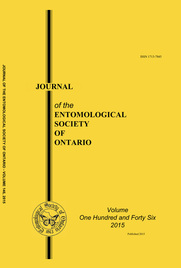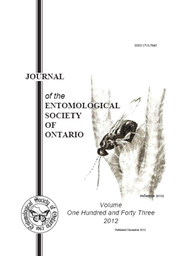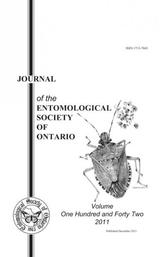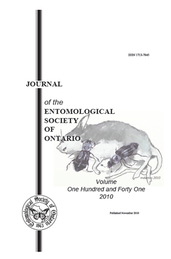J. ent. Soc. Ont. Volume 146, 2015
|
SEARCH
for Articles published in JESO! Journal of the Entomological Society of Ontario
Volume 146, 2015 I. FROM THE EDITOR [PDF] II. ARTICLE S.A. Marshall, N.E. Woodley, M. Hauser. 2015. The historical spread of the Black Soldier Fly, Hermetia illucens (L.) (Diptera, Stratiomyidae, Hermetiinae), and its establishment in Canada. J. ent. Soc. Ont. Volume 146: 51-54 [PDF] J. ent. Soc. Ont. Volume 146: 51-54 Scientific Note The Black Soldier Fly, Hermetia illucens (Linnaeus), is a synanthropic, polysaprophagous fly native to the Neotropics, but now found in every zoogeographic region following decades of spread throughout the warmer parts of the world. In the last few decades there has been considerable interest in using larvae of H. illucens for organic waste control, composting, and as animal food supplements. It has been studied as an agent for manure control (Sheppard et al. 1994), for controlling house fly infestations in chicken production (Furman et al. 1959, Sheppard 1983), and as a food supplement for fish (Bondari and Sheppard 1981) and swine (Newton et al. 1977). More recently, there has been considerable interest in using H. illucens as an agent for composting (Lalander et al. 2015). An internet search on “Black Soldier Fly” demonstrates that this use is reaching a household level. Although it has been suggested that H. illucens might have been first brought to Europe around 500 years ago (Benelli et al. 2014), the first verifiable Palaearctic record of the species is from southern Europe (Malta) in 1926 (Lindner 1936). The subsequent spread of this large, easily recognized species in Europe has been mainly along the Mediterranean coast of Spain, France, and Italy in the 1950s and 1960s (Leclercq 1969, 1997). In more recent years, the species has been documented spreading northwards in Central Europe: Ssymank and Doczkal (2010) recorded it from Germany and Roháček and Hora (2013) recorded it from the Czech Republic. We have seen specimens from South Africa collected as early as 1915 and from Malaysia, Hawaii, Solomon Islands, New Caledonia, Mariana Islands, Palau, and Guam in the 1940s. Probably by the 1960s, H. illucens had spread over most of the range it occupies today. The apparent spread of this species along coastlines and islands suggests that maritime transport may have played a role in repeated accidental introductions. |




